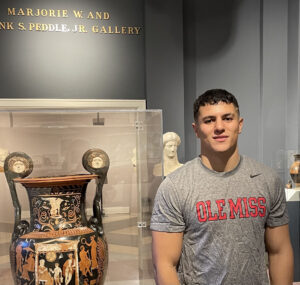 Lucas Laroche
Lucas Laroche
Museum Studies Minor Intern
My interest in working at The University of Mississippi Museum was sparked by my academic journey as an art history major and museum studies minor at Ole Miss. Coming from Paris, France, as an international student, I have been exposed to a rich tapestry of art and culture that has deeply influenced my perspective. The opportunity to combine my passion for art with my academic background excites me, and I am eager to contribute to the museum’s mission of sharing different cultures with the museum staff and visitors. My experience in the 16+ art history and museum studies classes, archaeology projects, and my creative approach to developing new ideas for events and exhibitions align perfectly with the innovative spirit of the museum. I am committed to academic excellence and teamwork, as demonstrated by my academic scholarship and involvement in the Ole Miss football team, and I am enthusiastic about the prospect of contributing to the museum’s growth and success.
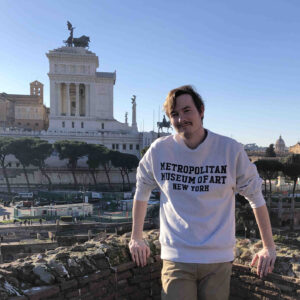 Clay Murry
Clay Murry
Collections Intern
Clay Murry is a Junior with History and Classics majors as well as an Intelligence and Security Studies minor. He intends to go to grad school for classical history or a museum studies field. Clay has always been interested in the study of ancient cultures and he was introduced to the University Museum through Dr. DiBiasie-Sammons’ Ancient Cities and Archaeological Ethics courses. He did work with provenance and object analysis research for those courses and shortly after began working with the museum’s education department as a tour guide and teacher. This exposure to collections work led him to apply as an intern with a special interest in the David M. Robinson collection. Skills from his academic work such as Latin, analysis of fakes and forgeries, and Greeco-Roman art and archaeology will benefit his work under the collections department.
Sydney Lynch
Past Interns

Alicia Dixon
Antiquities Research Intern
Alicia Dixon is a junior Classics, Philosophy, and English major. She intends to continue to graduate school after undergrad, and perhaps go to law school. In Spring 2015, Alicia took Dr. Hilary Becker’s “Ethics in Archaeology” class which involved provenance research on objects from the David M. Robinson Memorial Collection. It was this experience that lead her to apply for a Museum internship. This semester, Alicia’s knowledge of Latin, Roman history, and mythology has been essential to coin translation and identification. Alicia has also played a key role in the Robinson collection history 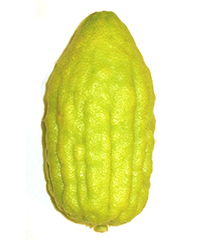
 research. Alicia has especially enjoyed coming across unexpected information during her research of the coins in the Robinson collection, such as the Jewish coin depicting a lulav bundle (a bundle consisting of date palm, myrtle, and willow) flanked by two etrogs (a citrus fruit used in Jewish traditions). Etrog (photos on right) is her new favorite word, and she hopes to see one in person some day.
research. Alicia has especially enjoyed coming across unexpected information during her research of the coins in the Robinson collection, such as the Jewish coin depicting a lulav bundle (a bundle consisting of date palm, myrtle, and willow) flanked by two etrogs (a citrus fruit used in Jewish traditions). Etrog (photos on right) is her new favorite word, and she hopes to see one in person some day.
 66 – 70 A.D.
66 – 70 A.D.
Jerusalem, Palestine, Judea
Mint of Jerusalem
Left: Lulav bundle consisting of Lulav (date palm), Hadass (myrtles), Aravah ( Willows) flanked by two etrogs (citron fruit). These four plants are associated with godliness, due to their use in the Torah, and are commonly used in ceremonies today, most notably, the Sukkot or Feast of Booths.
Translation: “Year Four”
1984.13.1
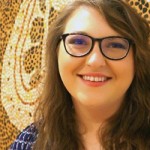 Libby Tyson
Libby Tyson
Antiquities Research Intern
Libby Tyson is a junior English major who hopes to pursue a career in archives one day. In Spring 2015, Libby took Dr. Hilary Becker’s “Ethics in Archaeology” class which involved provenance research on objects from the David M. Robinson Memorial Collection. It was this experience that lead her to apply for a Museum internship. Libby’s work at the Museum has involved creating new records which will expand upon what we already know about Dr. Robinson’s collecting habits.
Dr. Robinson was an avid collector from his early days as a student until his death in 1958. Robinson’s goal was to assemble a complete teaching collection that would span all of antiquity in every material, at an affordable yet credible source. This meant that Robinson’s sources were numerous, from his predecessors to former students, from auction houses in New York to Cairo and Paris. Although our records may indicate the provenance, or purchase history of each object, without context, many connections may become lost with time. Libby’s research has helped to shed a renewed light on Dr. Robinson, his contemporaries, and how the former art world functioned.

Left: Charles T. Seltman on the cover of Life magazine, September 20, 1943
Seltman, Charles T. (1886 – 1957)
One of Dr. Robinson’s art dealers was friend and colleague, Dr. Charles Seltman of Queen’s College. Seltman worked alongside Dr. Robinson on the 1928 excavations of Olynthus. Many artifacts currently in the Greek and Roman Antiquities Collection were once purchased by Dr. Robinson from Dr. Seltman’s private collection from Dr. Robinson, including marble busts, bronzes, figurines and pottery.
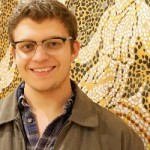 Zac Creel
Zac Creel
Antiquities Research Intern
Zac Creel is a junior Art History and Classics major. He is interested in pursuing a career in Art and Antiquities Law. In Spring 2015, Zac took Dr. Hilary Becker’s “Ethics in Archaeology” class which involved provenance research on objects from the David M. Robinson Memorial Collection. It was this experience that lead him to apply for a Museum internship. This semester Zac’s ability to read Greek, Latin, and Hebrew, has been essential to coin translation and identification. Zac has also played a key role in the Robinson collection history research.
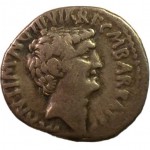 Left: Marc Antony and Octavian Coin (Obverse and Reverse views)
Left: Marc Antony and Octavian Coin (Obverse and Reverse views)
c. 41 B.C.
Denarius
Obverse: Head of Marc Antony, M.ANT.IMP.AVG.III.VIR. R.P.C.M.BARBAT.Q.P.
Translation:
M ANT IMP AVG = Marcus Antonius Imperator Augustus
III VIR R P C = Triumviri Rei Publicae Constituendae Consulari Potestate
(Three Men for Confirming the Republic with Consular Power)
M BARBAT QP = Marcus Barbatius Pollio Quaestor pro Praetore
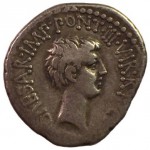 Reverse: Head of Octavian, CAESAR IMP PONT III VIR R P C
Reverse: Head of Octavian, CAESAR IMP PONT III VIR R P C
Translation:
CAESAR IMP PONT = Caesar Imperator Pontiff
III VIR R P C = “Triumviri Rei Publicae Constituendae Consulari Potestate
(Three Men for Confirming the Republic with Consular Power)
1977.3.982
III VIR R P C was used to abbreviate “Triumviri Rei Publicae Constituendae Consulari Potestate,” or “Three Men for Confirming the Republic with Consular Power” Three men of power being Octavian, Marc Antony and Marcus Aemilius Lepidus.
In 43 B.C., Marc Antony, Marcus Aemilius Lepidus, and Octavian joined powers, to form a triumvirate, following the assignation of Julius Caesar. Together, the triumvirs, fought Brutus and Cassius, who still controlled the Eastern Roman territories. The following year Antony and Octavian went to battle, first, Antony defeated Cassius then Brutus, was defeated by Octavian. Following their victory, the Roman world was reassigned, with Antony ruling the Eastern territories and Octavian the Western, leaving Lepidus Africa.
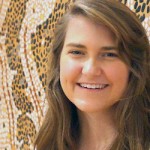 Sarah Sloan
Sarah Sloan
Antiquities Research and Writing Intern
Sarah is a senior majoring in Art History and English with a minor in Japanese Language. She is interested in pursuing a career as a Museum Curator, and is busily applying for graduate school. This is Sarah’s second semester working at the Museum, having returned from her studies abroad in the Spring and her summer internship at the Mississippi Museum of Art. Last Fall, Sarah wrote the exhibit text about Olynthus’s history that will go in the Greek and Roman Reinstallation Exhibit. This semester she has continued to study Robinson’s Olynthus excavations and has helped curate the objects that will accompany this exhibit section. Sarah has also “adopted” objects to research, improving many of our object files. One such example is Sarah’s adoption of the white-ground lekythoi that will also go in the reinstallation.
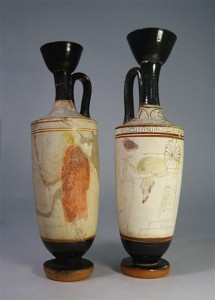
1977.3.83 and 1977.3.84
A lekythos, or lekythoi when speaking of multiple lekythos, is a type of Greek pottery used for storing oil. Dating as far back as the early sixth-century B.C.E., the term lekythos was commonly used by the Athenians in reference to any small oil flask. Lekythoi’s contexts varied from use in baths and gymnasiums to funerary rituals. During funerary rituals, the oil held in lekythoi was often used to anoint the bodies of dead unmarried men and left in the tomb to aid them in the afterlife.
Of the two white-ground, cylindrical lekythoi shown here, both show the typical iconography of lekythoi. On the left lekythos, a funerary ritual is being shown. A woman holding a basket on the right and a draped youth holding an alabastron on the left stand opposite each other around a tomb. The youth may have been a relative accompanying the woman to the tomb. A small winged figure near the woman is called an eidolon and is thought to represent the dead. The right lekythos shows four figures around a stele of a tomb. Two women flank the stele on the left and a man with spears and a child flank the stele on the right. Just as in the left lekythos, we see female visitors accompanied by a male relative. However, because he is shown with spears and portrayed as a warrior, the male could be seen as a representation of the dead, as well. – Sarah Sloan
 Chelsea Stewart
Chelsea Stewart
Antiquities Research and Writing Intern
Chelsea is a recent graduate, having received her BA in Classics and History in May 2015. She is currently continuing coursework in Classics and Art History while applying for graduate school. She is interested in pursuing a career in research and curatorial work. This semester Chelsea’s primary focus has been the research of the Victor Merlo Collection.
The Victor Merlo Collection
The majority of the University Museum’s collection of ancient surgical instruments and Roman glass were formerly in the private collection Mr. Victor Merlo, a long-time friend and correspondent of Dr. Robinson. Merlo met Robinson in California in the early 1930s, while Robinson held a summer teaching position at the University of California. At this time, Merlo, a California resident, had his private antiquities collection installed at the Los Angeles Museum, and was made the Honorary Curator of Classical Art.
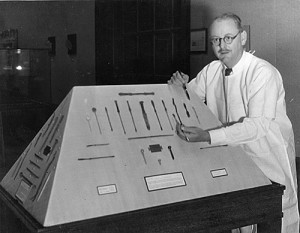
Victor Merlo with his collection of ancient surgical instruments, Los Angeles Museum, c. 1931–1948

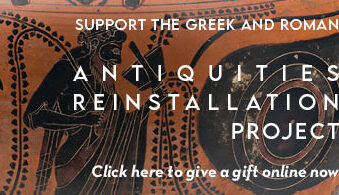
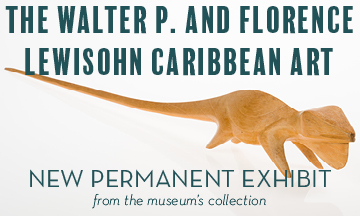
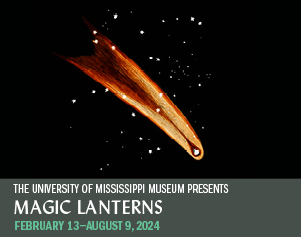

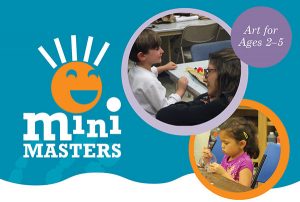

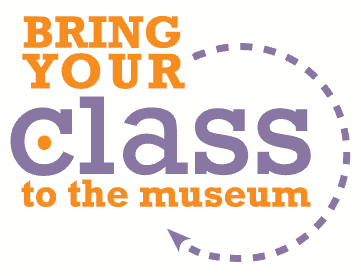
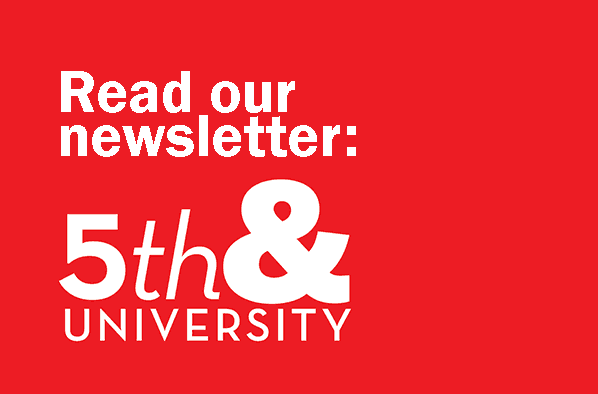
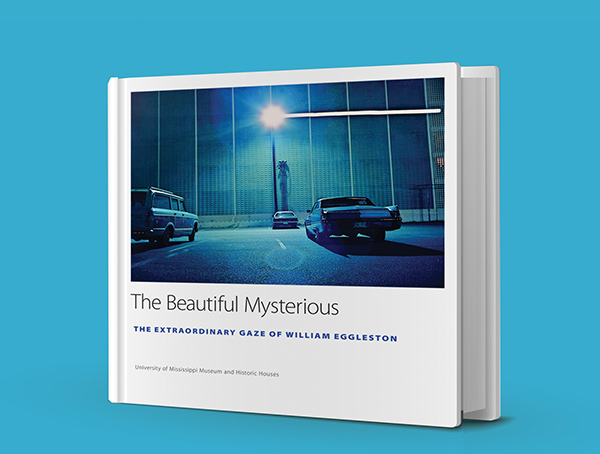
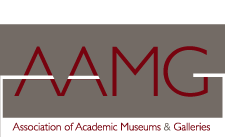


Hear Our Latest News First!